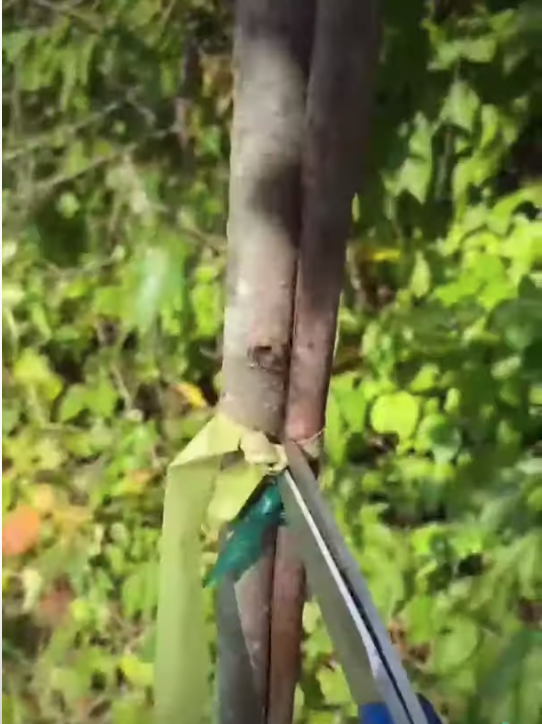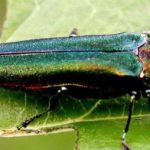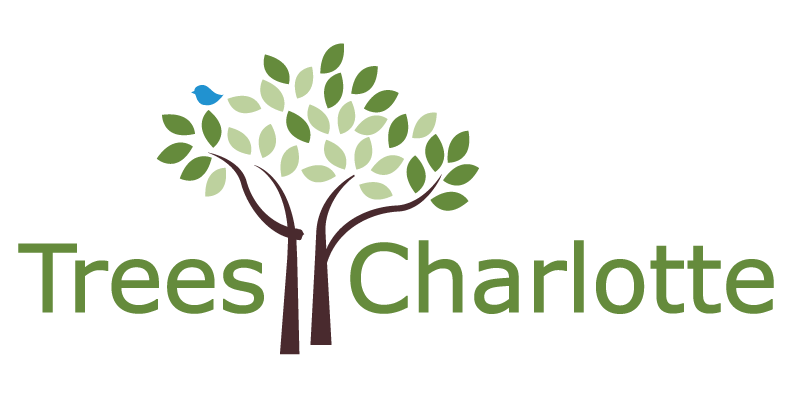Helpful Hints for Healthy Trees
Once your tree is in the ground, your job isn’t over just yet. The more care you put into your tree during its establishment period and beyond, the more value it will add to your home, health, and environment. Read through our helpful hints below and keep the Tree Owners Manual handy for even more tips
Within its First Year

Watering: During the first growing season, TreesCharlotte trees should be watered roughly 5 gallons per week. Your tree may require more water during hot, dry spells or less during rainy periods. Soil drainage also can effect how much you should water. The best watering advice we can give you is to put your finger in the soil around the root ball and feel. If the soil is dry throughout, it needs water. Read more about watering tips here:
Mulch: Mulching your tree using organic material (wood chips, pine needs, etc.) is one of the best things you can do to care for your young tree. Not to mention it’s easy and cost-effective.
Fertilizer and Pruning: We recommended avoiding fertilizer and pruning during the tree’s first year in the ground. However, it acceptable to prune dead, diseased, and broken branches during this time.
Stake Removal: If your tree came with a stake, remove it 6-12 months after planting! A stake left on too long can girdle the tree and cause long-term problems.
Check out our stake-removal video!
As it Grows…
Watering: If you can, routinely check the soil around your tree to see if water is needed.
Mulch: Once the first layer of mulch has mostly broken down, you should continuously replace it throughout the tree’s life to keep it health. More mulch may be required as the tree gets bigger, since the ring should extend out to the drip line.
Pruning: Pruning trees as they grow is a great tree care practice that can save thousands of dollars in mature tree care. Just as you would train a puppy to behave properly, it is important we do the same for our trees. Train pruning improves long-term structure and improves tree health by allowing more light and wind to penetrate to the inner branches. Just be sure to never remove more than 25% of leaf-bearing canopy at one time and always use proper pruning techniques.
Fertilizer: Fertilizer is not always necessary, but some trees in urban soils can experience nutrient deficiencies. We always recommend getting a fertilizer test done before taking action to ensure you are purchasing and applying the correct type and amount. Check out our fertilizer guide below:
Mature Tree Care
Taking care of your mature trees promotes tree health and structural integrity, ensures a tree’s value will continue to grow, and prevents the development of more costly problems in the future. Read about mature tree care here:
Watering: Once your tree is mature, it will seldom need supplemental watering unless there is a significant drought.
Mulch: Keep it up!
Pruning: In most cases, mature tree pruning should be done by a professional to avoid injury to the tree and yourself. Smaller, easy to access branches can be done on your own, but be sure to understand proper pruning technique. Learn how below:
Ivy-removal: Invasive ivy like English ivy, winstera, and kudzu can quickly grow up a tree, which can add extra weight and stress the tree significantly. If you see vines making their way up, make sure to cut them back. Watch our Ivy Removal Video HERE!
Protecting Trees from Harm
An urban landscape is a tough place for a tree to grow up. Even with proper care and maintenance, trees can still be susceptible to adverse environmental influences. This might be in the form of storms, drought, invasive pests, and construction damage.
Learn more about Avoiding Tree Damage During Construction.
Learn more about Protecting Your Tree From Extreme Weather.
Pests and Diseases
Emerald Ash Borer

The Emerald Ash Borer is an invasive insect that has already killed tens of millions of ash trees in North America and is moving into areas of North Carolina. Susceptible trees in North Carolina are most ash species ash and white fringetree. This beetle can spread by flying or through the accidental, human-facilitated movement of infested wood. For more information about the Emerald Ash Borer, click here.
Cankerworm
Cankerworms are a common, native caterpillar that feasts on the leaves of hardwood trees, preferably willow oaks. For years, Charlotte experienced a higher-than-normal population of cankerworms, which threatened the health of our beloved canopy. However, thanks to tree-banding efforts, cankerworm populations have dropped to manageable levels. Tree banding is no longer necessary and it is recommended that any existing bands be removed. More on cankerworms here: Cankerworm Update
Other Common Pests:
- Crape Myrtle Bark Scale: White-grey encrustations that stick to the bark of Crape Myrtles.
- Southern Pine Beetle: Bark beetles that infest pines by eating the vascular system, causing orange/brown needles and pitch tubes on the bark.
- Orange Striped Oakworm: Black and orange caterpillars that defoliate primarily oaks in fall.
- Ambrosia Beetle: Seeing toothpick-looking frass coming out of your declining tree? It’s likely Ambrosia Beetle.
Arborists Offer Expertise in Tree Care
A professional arborist should be consulted periodically to ensure optimum tree health. They can help prevent environmental damage to trees, and can help with an action plan for a tree at risk. If you need professional assistance with your tree, consult with an arborist who specializes in the care of individual trees. Arborists are knowledgeable about the needs of trees and are trained and equipped to provide proper care.
There are many qualified arborists in Charlotte. The companies listed below support TreesCharlotte and are staffed with arborists whose partnership and expertise are invaluable to TreesCharlotte. This list is by no means comprehensive and we suggest you choose an accredited arborist with experience and references.
- Arborguard Tree Specialists
- Bartlett Tree Experts
- Davey
- Heartwood Tree
- Schneider Tree Care
- Check out the ISA’s Find an Arborist tool here for more arborist recommendations!
When hiring any tree care company, we recommend you consider the following protocols to protect yourself:
- Insist on certificates of insurance for liability damage and Workers Comp. These should be provided by the service provider’s insurance company by email. Do NOT accept a handed piece of paper! If someone ends up hurt while working on your property, you do NOT want to be liable for their medical expenses.
- Do NOT pay any money in advance of completion.
- Check references.
You can learn a lot about tree care from these TreesCharlotte partners:
- International Society of Arboriculture is an excellent resource for locating an ISA-Certified Arborist. It is important that arborists have proper credentials, and all referrals on this site have verifiable certification.
- The Southern Chapter of the International Society of Arboriculture is a non-profit organization comprised of members in Alabama, Arkansas, Georgia, Louisiana, Mississippi, North Carolina, South Carolina, Tennessee, and Puerto Rico and the US Virgin Islands. Their mission is to advance tree care knowledge and practices through research, education, and professional development.
